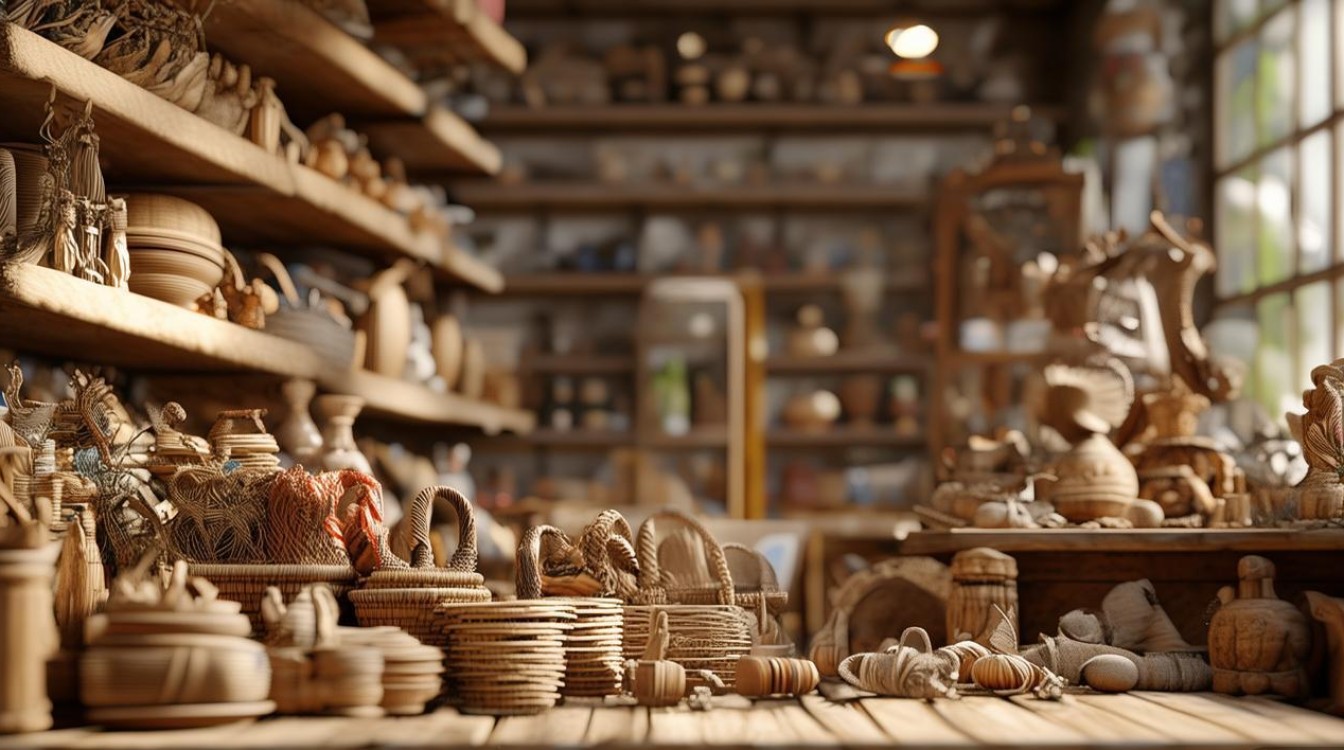在雅思口语考试中,谈及“handcrafts”(手工艺品)是一个能够展现个人经历与文化理解的好话题,无论是描述一件亲手制作的作品,还是分享对手工艺文化的观察,都能体现考生的语言组织能力与思维深度,本文将从手工艺的定义与价值、常见类型及文化意义、在雅思口语中的表达策略,以及手工艺与现代社会的关联等方面展开,帮助考生全面掌握这一话题。

手工艺的定义与核心价值
手工艺,指通过手工或借助简单工具制作的、具有实用或装饰性的工艺品,与工业化批量生产不同,手工艺的核心在于“人”的参与——制作者的情感、技艺与创造力融入每一件作品,使其独一无二,其价值不仅在于实用功能,更在于承载的文化记忆与情感联结,中国的剪纸、墨西哥的彩陶、印度的手工地毯,都凝聚着特定地域的历史传统与审美理念。
从雅思口语角度看,讨论手工艺时,可从“个人经历”与“文化观察”两个维度切入,描述童年时学习编织的经历,或分析某件手工艺品如何反映当地生活方式,既能展现词汇量,又能体现逻辑层次。
常见手工艺类型及文化内涵
全球手工艺种类繁多,以下列举几种具有代表性的类型,并附其文化意义,供考生参考:
| 手工艺类型 | 代表地区/国家 | 文化意义 |
|---|---|---|
| 陶瓷制作 | 中国(景德镇)、日本(有田烧) | 体现泥土与火的结合,承载“天人合一”的哲学思想,如青花瓷象征吉祥与文人风骨。 |
| 刺绣 | 中国(苏绣、湘绣)、越南 | 以针线为笔,记录生活场景与神话传说,如苏绣“双面绣”展现精湛技艺与审美追求。 |
| 编绳(如中国结、凯尔特结) | 中国、爱尔兰 | 编绳的“结”与“吉”谐音,寓意团结、吉祥,图案中的环环相扣象征生命的循环与联结。 |
| 木雕 | 非洲(马里)、印度(木偶制作) | 取材自然,雕刻图腾或宗教符号,用于祭祀、仪式或儿童教育,体现对自然的敬畏。 |
在口语表达中,考生可结合具体案例展开。“I once learned to make Chinese knots with my grandmother. The red threads symbolize good luck, and the interlocking patterns represent family bonds.” 这样的描述既具体又有文化深度。
雅思口语中的表达策略
Part 1:基础话题问答
当被问及“Do you like handcrafts?”时,避免简单回答“Yes/No”,可结合个人经历补充细节:
“Yes, I’m particularly drawn to pottery. I took a short course last year where I learned to make clay bowls. It was fascinating to see how a simple lump of clay could turn into a functional object through my hands. The process of shaping and glazing it felt almost meditative.”
Part 2:个人经历描述
若cue card为“Describe a handcraft you made”,可按“背景-制作过程-感受”结构展开:
- 背景:何时、何地、为何制作(如“To give my mom a birthday gift”);
- 过程:材料(“colorful threads”)、步骤(“first I drew a pattern, then stitched it with cross-stitch”)、遇到的困难(“the threads kept tangling, so I had to be extra patient”);
- 感受:妈妈的反应(“she was moved and hung it in her living room”)、个人收获(“I realized that handmade gifts carry more emotional value than store-bought ones”)。
Part 3:深入讨论与文化对比
考官可能追问“Why do some people prefer handmade items over mass-produced ones?”,可从“独特性”“情感价值”“环保”等角度分析:
“Handmade items are unique—no two pieces are exactly the same. Unlike factory products, they often tell a story: the maker’s effort, the local materials used, or the cultural techniques behind them. Also, many handcrafts are eco-friendly, as they use natural materials and sustainable methods.”
手工艺与现代社会的碰撞
尽管工业化生产占据主流,手工艺在当代社会仍焕发新生。“慢生活”理念推动手工艺复兴,人们通过制作陶艺、编织等放松身心,对抗快节奏的压力;社交媒体(如Instagram、小红书)让手工艺人展示作品、传授技艺,吸引年轻群体关注。#handcrafts 话题在TikTok上有数十亿播放量,年轻人学习“tufting(簇绒枪)”制作地毯、“embroidery(刺绣)”装饰衣物,形成新的潮流。
在雅思口语中,可结合这一趋势:“Nowadays, many young people are rediscovering handcrafts as a way to express their creativity. Social media platforms like YouTube have made it easier to learn techniques—for instance, I followed a tutorial to make macrame wall hangings, and now I sell my small creations online.” 这类回答能体现对社会现象的观察。
相关问答FAQs
Q1: 如何在雅思口语中避免对手工艺的描述过于笼统?
A1: 具体化是关键,可以从“材料、步骤、感官细节”入手,描述刺绣时,不说“it was beautiful”,而说“The silk threads shimmered in the sunlight, and the tiny stitches formed a delicate peony pattern that smelled faintly of the jasmine tea I drank while making it.” 通过视觉、嗅觉等细节让描述更生动。
Q2: 如果对手工艺了解不多,如何应对相关话题?
A2: 利用“通用逻辑+合理想象”,即使不熟悉具体技艺,可从“制作手工艺的通用步骤”(准备材料-学习技巧-动手制作-完成作品)或“手工艺的普遍意义”(情感价值、文化传承)展开。“I haven’t tried making handcrafts myself, but I admire how they connect people to their roots. For instance, in my hometown, elderly women still weave bamboo baskets using techniques passed down for generations, which keeps our local traditions alive.” 这样既真实又有逻辑。











